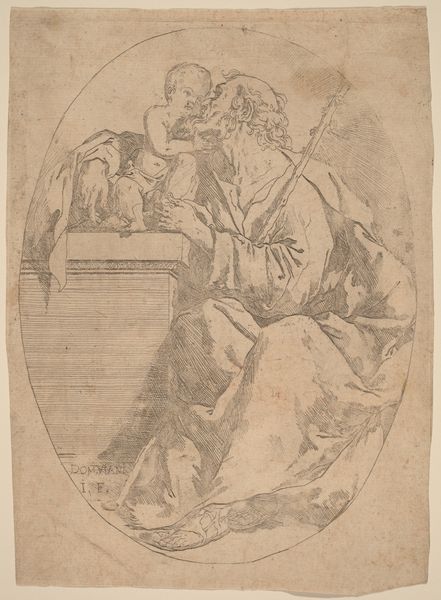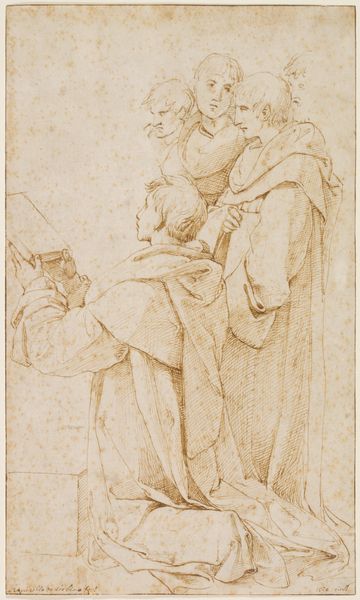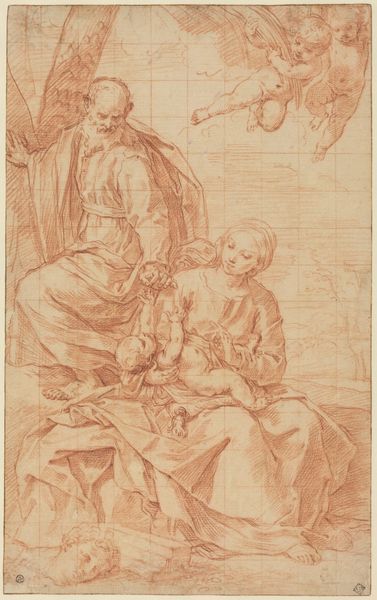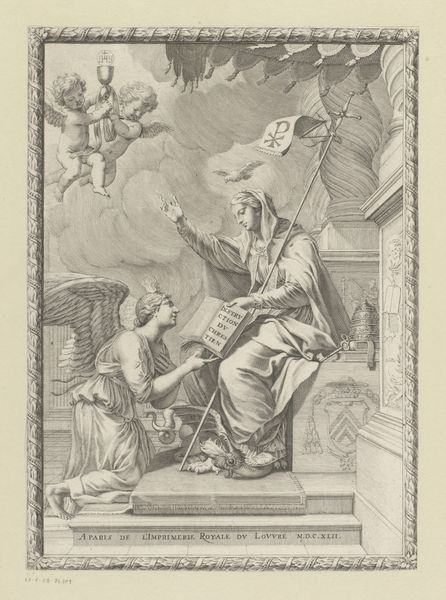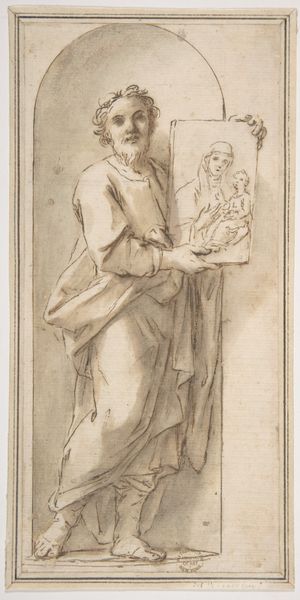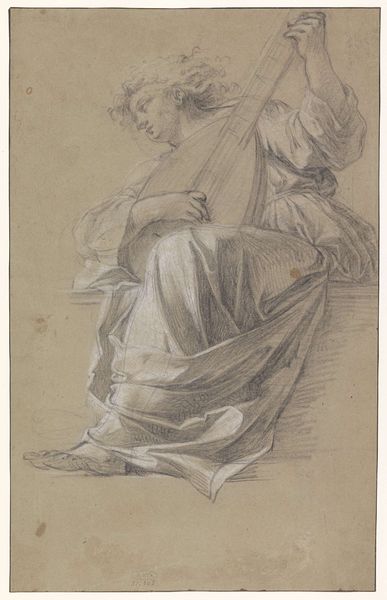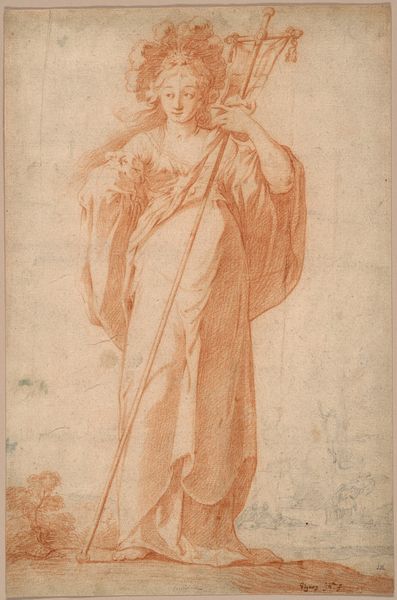
Allegory of Justice with Two Putti (after Lorenzo Sabatini's Fresco in Palazzo Vecchio, Florence) 1500 - 1600
0:00
0:00
drawing, dry-media, chalk
#
drawing
#
allegory
#
figuration
#
11_renaissance
#
dry-media
#
chalk
#
history-painting
#
academic-art
#
italian-renaissance
Dimensions: 13 x 9-15/16 in. (33 x 25.3 cm)
Copyright: Public Domain
Curator: What strikes me immediately about this drawing, rendered in chalk, is the overwhelming feeling of lightness. It's like justice is being envisioned in a very ethereal, almost dreamy state. Editor: Indeed. What we have here is a chalk drawing, believed to have been created sometime between 1500 and 1600 by an anonymous artist. The artwork, titled "Allegory of Justice with Two Putti," is held here at the Metropolitan Museum of Art and is understood to be a copy after Lorenzo Sabatini's fresco located in Palazzo Vecchio, Florence. Curator: That dove atop the scepter held by the putto. To me, the dove is carrying a message of spiritual peace and judgement tempered with grace. Are we to believe, then, that earthly justice aspires to divine ideals? Editor: Possibly. Though the figure of Justice, with her Roman helmet and the scales, also echoes classical authority and established legal systems. The interplay between the sacred and the secular is certainly present here. It would also be an opportunity to challenge what 'Justice' stood for. Who was included or excluded? What did justice look like depending on one’s gender, race, class? Curator: It's the book she's holding, though, that compels me most. In that era, knowledge of the law and scripture was, of course, a source of tremendous authority and influence, even oppression, which still rings true in a different form today. The image carries many of the symbols related to justice in Renaissance Europe. The symbols were used as a tool for shaping societies. Editor: And it is the reason these symbols were being disseminated through art that piques my interest. Given this piece copies Sabatini’s fresco, I can't help but see the reproduction of images of justice in popular mediums—such as chalk drawings—as part of broader social and political dialogues. Justice is an idea in action, so is this depiction just another propaganda tool, too? Curator: It invites introspection on what 'Justice' means in a variety of cultures through shifting epochs. And that dialogue, fueled by images, is something humanity urgently needs in modern day. Editor: Agreed, this artistic echo of Justice across centuries truly calls into question how we envision its realization. It forces us to think about the stories we inherit and how we reshape them in pursuit of a more just world.
Comments
No comments
Be the first to comment and join the conversation on the ultimate creative platform.
